1. Gunfights at High Noon
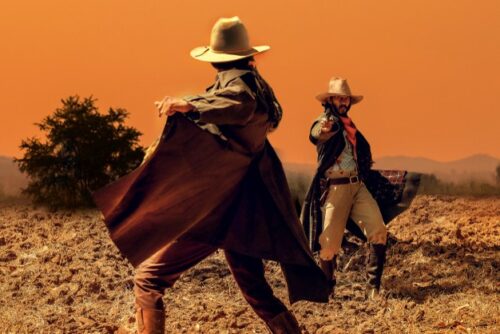
The showdown in a dusty main street, two men squaring off as the clock strikes twelve, is pure Hollywood. While real gunfights did happen, they were rare, messy, and usually over quickly—not theatrical duels with onlookers. Towns like Dodge City and Tombstone had strict gun control ordinances, and most conflicts ended before the guns were even drawn. The notion of an honorable, rule-bound duel was more about cinematic drama than real history.
Americans still find this myth appealing because it dramatizes courage and justice in simple, visual terms. It’s the fantasy of clear moral choices—good guy versus bad guy—something modern life often lacks. The myth also feeds into the cultural fascination with heroes who stand alone for what’s right. It’s less about violence and more about valor, which is why it keeps showing up in Western films and even superhero stories today.
2. The Lone Cowboy

The image of the solitary cowboy riding off into the sunset is one of the most enduring symbols of the American West. Hollywood cemented this myth in the mid-20th century, portraying cowboys as rugged individualists who thrived alone. In reality, most cowboys worked in teams on cattle drives and depended heavily on others for survival. Still, the idea of freedom, independence, and open skies keeps this myth alive in American imagination.
Part of why it sticks is that it represents something people still crave today—escape from routine and self-reliance in a vast landscape. Movies like Shane and The Good, the Bad and the Ugly kept that spirit alive long after the Old West faded. The myth ignores the grueling work, loneliness, and danger that came with real cowboy life. Yet it continues to inspire country songs, truck commercials, and a romantic idea of “living by your own rules.”
3. The Noble Outlaw
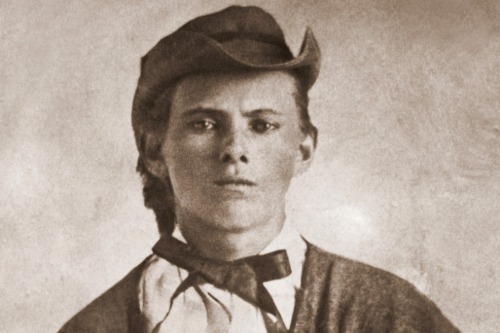
Figures like Jesse James and Billy the Kid are often remembered as Robin Hood-style rebels defying corrupt authority. In truth, they were criminals who robbed banks and trains, and there’s little evidence they shared their loot with the poor. Newspapers of the time sensationalized their exploits, turning them into folk heroes to sell more copies. Over time, those stories hardened into legend, and Americans began to admire their defiance more than condemn their crimes.
This myth persists because it taps into the national love of rebellion and mistrust of power. The idea that one person could stand up to injustice, even violently, feels quintessentially American. Movies and dime novels kept polishing that image until it gleamed. Even today, when people talk about “antiheroes,” they’re often channeling this same Western archetype.
4. The Frontier as Empty Land
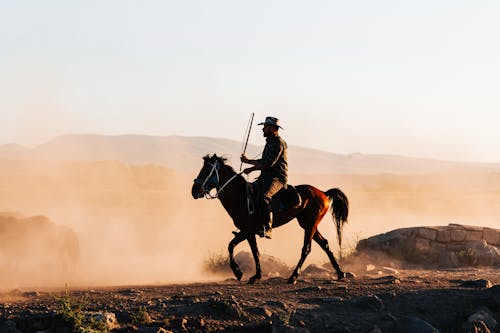
Many old Westerns portrayed the frontier as a blank canvas waiting for brave settlers to “tame” it. In reality, millions of Indigenous people had lived across those lands for centuries with complex societies and deep spiritual ties to the terrain. The myth of an “empty frontier” helped justify westward expansion and the displacement of Native tribes. It’s a comforting but deeply misleading story about conquest and destiny.
Still, the image of wide-open opportunity resonates with Americans who prize ambition and new beginnings. The frontier myth made hardship seem heroic and struggle seem meaningful. It turned settlement into a moral mission rather than a political or economic enterprise. That’s why it continues to echo through everything from real estate ads to space exploration slogans.
5. Saloon Life as a Constant Party
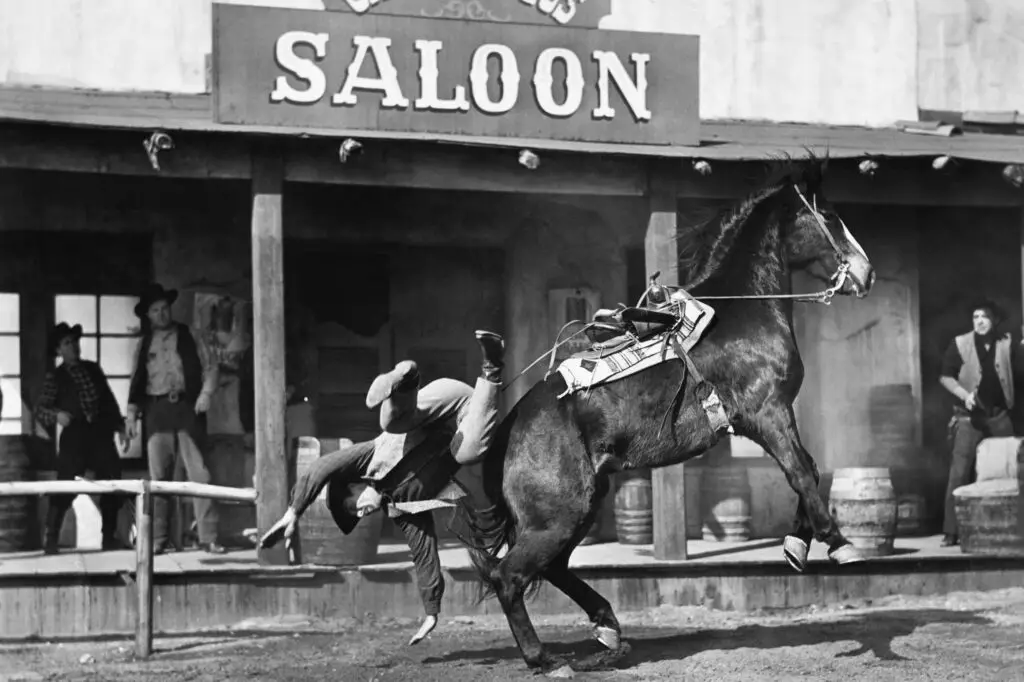
From swinging doors to piano players and poker tables, the Western saloon is an icon of rough-and-tumble fun. While saloons certainly existed, most were far grimmer—smoky, crowded, and sometimes violent. They were places of business, not always pleasure, and women working there often faced exploitation. The myth of endless whiskey and good cheer came later, courtesy of pulp fiction and Hollywood.
What makes it nostalgic is that it feels like a slice of unfiltered freedom—a place where everyone could be themselves. The saloon was a symbol of community in an otherwise harsh world. Even if the reality was darker, it offered a sense of belonging that people still yearn for. Today’s country bars and themed restaurants keep that myth alive, turning grit into charm.
6. Cowboys and Native Americans as Eternal Enemies
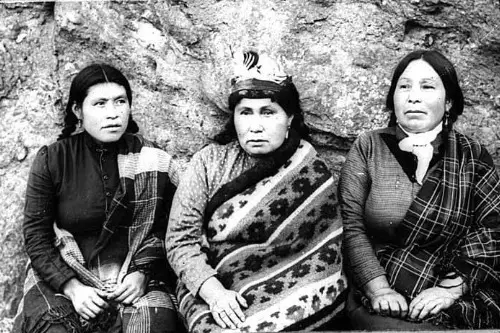
Western movies made it seem like cowboys and Native Americans were locked in constant battle. In truth, most cowboys rarely fought Native tribes at all, and many were Indigenous, Black, or Mexican themselves. The “cowboys vs. Indians” trope simplified a far more complex history of alliances, trade, and occasional conflict. It was an easy narrative for screenwriters, but not an accurate reflection of the past.
Despite its distortions, the myth endures because it created a clear-cut story of good versus evil. That kind of moral clarity is emotionally satisfying, even if it’s false. Over time, newer films have tried to correct this, showing Native perspectives and humanizing all sides. Still, the nostalgia for those old Western standoffs lingers in pop culture, fueled by the simplicity of the myth.
7. Women as Damsels in Distress
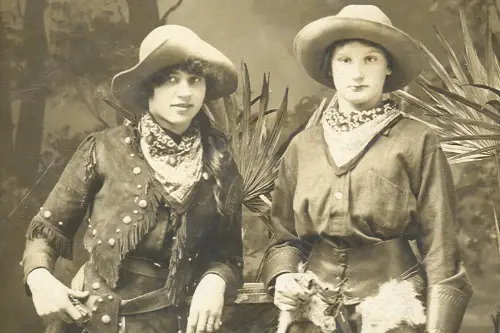
Classic Westerns often reduced women to background characters or helpless figures waiting to be saved. In truth, frontier women were essential to survival—they ran homesteads, raised livestock, and kept entire towns running while men were away. Some, like Calamity Jane or Stagecoach Mary, became legends in their own right for their toughness and independence. The damsel trope was easier to dramatize on screen than the reality of women doing backbreaking, crucial work.
The myth stuck because it fit the old Hollywood formula: a hero needs someone to rescue. It gave cowboys emotional depth, even as it sidelined women’s real achievements. Still, Americans feel nostalgic for that image because it represents a simpler emotional world—one where roles were clear and love was straightforward. Fortunately, modern Westerns are revising the story to show women as full participants in the frontier’s grit and glory.
8. The Good Sheriff Who Kept the Peace

From Wyatt Earp to fictional marshals like Matt Dillon, the sheriff became the symbol of order in the Wild West. But the truth is that most towns already had local laws, courts, and community rules that kept things running smoothly. Sheriffs often dealt with petty crimes and disputes, not daily shootouts with outlaws. Some of the “heroes” even had questionable reputations or political ties that blurred the lines between justice and corruption.
Still, Americans love the idea of one brave lawman standing between chaos and civilization. It’s a story about courage, integrity, and moral clarity—values people still want to believe in. That’s why the sheriff archetype survives in modern media, from cop shows to superhero films. It’s a nostalgic reminder that one person, armed with conviction, can make a difference.
9. Every Town Was Full of Gunfighters
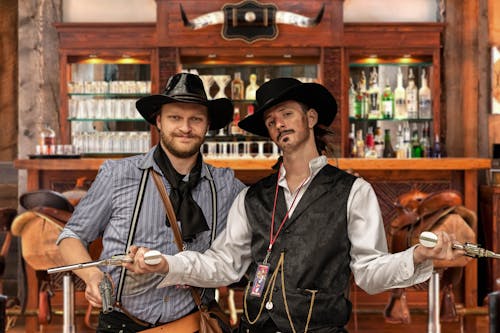
Hollywood made it seem like every saloon had a gunfight before dinner and a duel after breakfast. In reality, most frontier towns were relatively peaceful, with violence being the exception, not the rule. Many places even banned the carrying of firearms within town limits, including Dodge City and Tombstone. The constant action in Westerns came more from filmmakers’ need for excitement than from real life.
The myth endures because it feeds a craving for danger and heroism rolled into one. Americans like the idea of a world where problems could be solved with courage and a steady hand. It’s drama distilled into a single moment—fast, decisive, and clear. Even though real life was quieter, the legend of endless gunfights gives the West a cinematic pulse people can’t let go of.
10. Stagecoach Robberies Around Every Corner
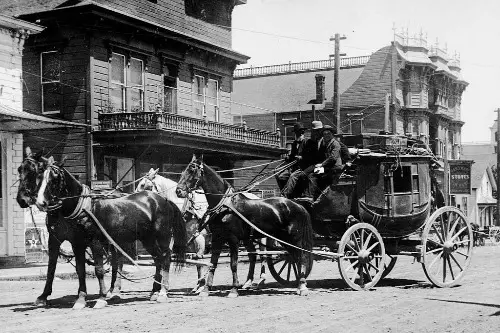
The masked bandit leaping from the brush to rob a coach full of gold bars is a Western classic. But such robberies were rare—there were only a few hundred reported cases across decades of frontier travel. Companies like Wells Fargo took security seriously, and most coaches carried little money anyway. The myth grew because it made for thrilling stories and sold tickets at the box office.
Even so, the idea of danger on every road captured the imagination. It gave the frontier a sense of unpredictability, where every mile was an adventure. Americans still romanticize that risk because it turns ordinary travel into an epic journey. The real West may have been quieter, but the myth makes it feel like a never-ending adventure.
11. The Endless Frontier
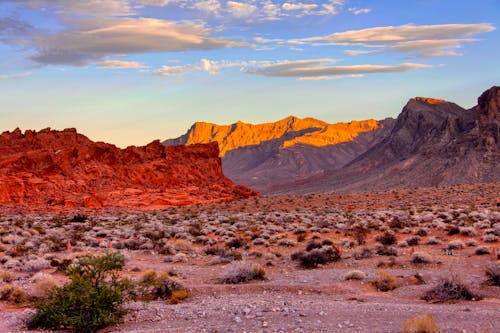
For generations, Americans believed the frontier stretched on forever—a boundless world waiting to be explored. But by 1890, the U.S. Census Bureau declared the frontier officially closed, meaning the line of “unsettled” land had disappeared. Still, the idea of limitless possibility persisted, shifting from geography to imagination. “Go West” became a mindset, not a direction.
This myth remains powerful because it embodies hope and reinvention. It tells people there’s always another horizon to chase, whether it’s in space, science, or personal ambition. The West became a metaphor for progress itself, something America still clings to. Even though the land ran out, the dream of the frontier never did.
12. The Wild West as Lawless and Free
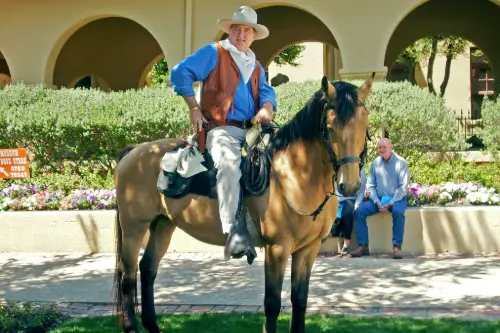
One of the biggest myths of all is that the West was a chaotic place with no rules or authority. In truth, frontier towns had local governments, sheriffs, judges, and even written laws—many stricter than people imagine. Communities depended on cooperation, not anarchy, to survive in harsh conditions. The image of a lawless wilderness came mostly from pulp novels and sensational news stories.
Still, the lawless West remains a comforting fantasy for those weary of bureaucracy and modern complexity. It represents a place where people could rely on their instincts and make their own justice. That sense of unfiltered freedom feels thrilling, even if it was mostly fiction. The nostalgia lingers because it speaks to a timeless American longing: the desire to live wild and ungoverned, if only for a moment.
This post 12 Old Western Myths That Still Make Americans Feel Nostalgic was first published on American Charm.


